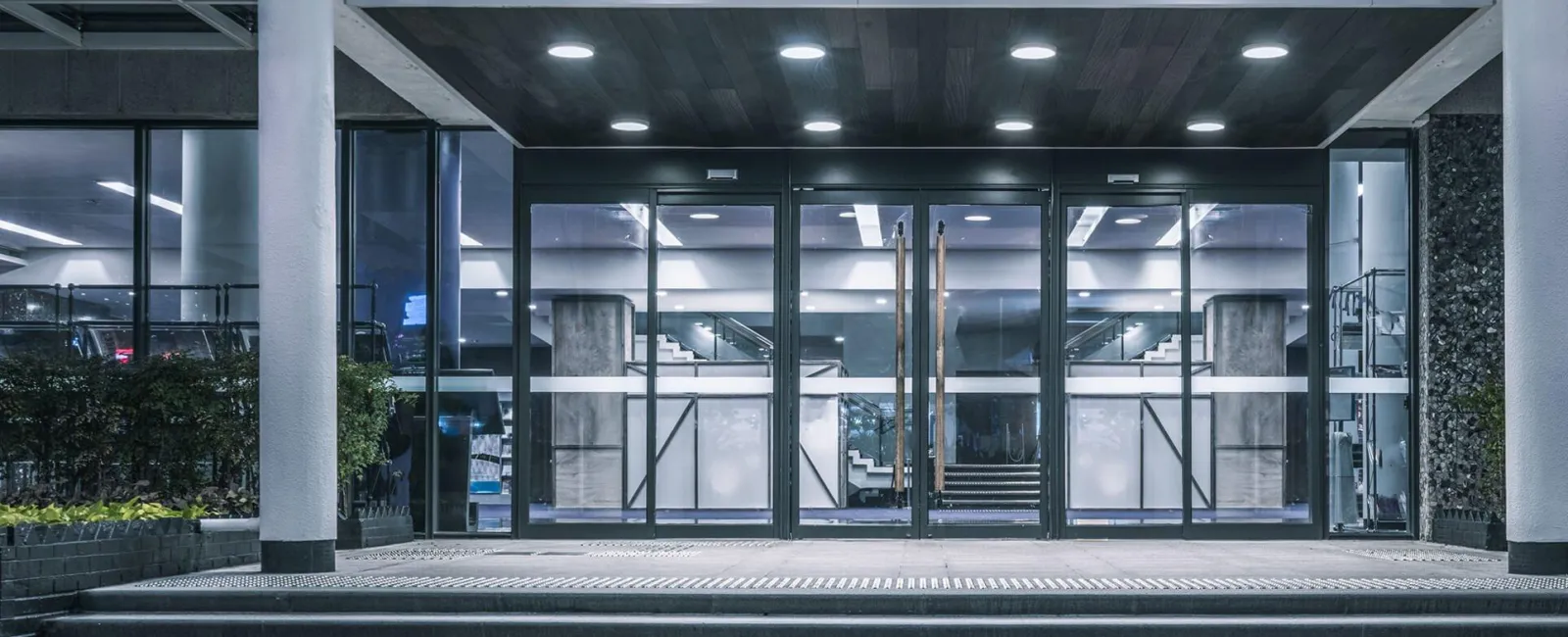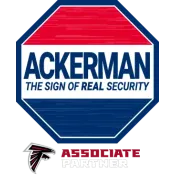Business security works best when its individual components work together as one cohesive unit. In other words, the whole of the system is greater than the sum of its parts.
When these security components speak to one another and to the monitoring station they're connected to, they greatly increase the safety of employees and decrease the risk of theft and property damage.
Five critical components are typically found in today's most sophisticated commercial security systems:
- A fire safety system
- Safety / security glass
- A commercial monitoring solution
- An access control system
- A video surveillance system
Regardless of whether you're installing a commercial security solution for a warehouse, a quick service dining establishment, a small businesses, a worship center or a school, these five elements are required if one's goal is comprehensive protection from all threats—both internal and external.
Each security component is covered in the article below. Alternatively, you canreach out to a team member at Ackerman Security for a free consultation, either by phone at 866.343.1234, or by scheduling online.
Component #1: An Up-to-Code Fire Safety System
Fire alarms require no introduction. Fire safety systems are mandated by state and federal governments in commercial properties, so this is one component your property is already likely to have.
What may come as a surprise is just how advanced these systems have become in recent years. If a company is focused on compliance alone, it could easily miss out on new safety features that can save lives and property.
Some of the advances taking place in commercial fire defense today include:
- Fewer false alarms: Today's smart control panels and sensors are better at assessing early warning signs and filtering out the false alarms from the true threats.
- Faster fire and smoke detection: Using hyper-responsive ionization and photoelectric components, fires or smoke can be detected much faster than before.
Connected alerts and alarms: Modern fire alarms can send alerts and notifications directly to smartphones which have been granted access.
Component #2: Safety & Security Glass
Security glass is any glass that has been heat-tempered and laminated to increase strength and eliminate "sharding" upon breaking. There are dozens of different types of security glass, each possessing unique defenses against particular threats.
Some of the most common types of security glass include:
- Tempered glass:The most common type of security glass. This meets the compliance demands of most state and local governments from a safety standpoint because it breaks into cubes rather than shards. But it isn't very effective at stopping projectiles or break-ins.
- Laminated glass: Laminated glass is usually comprised of two pieces of tempered glass with a layer of polyvinyl butyral, or PVB, sandwiched in the middle. This is true security glass that can resist blows from hammers, crowbars and even bullets if the PVB layer is thick enough.
Like fire alarms, security glass is a compliance concern for property owners, and some form of protective glass is likely already installed. But if you're looking at upgrading your commercial security, new security glass is worth considering.
You can learn more about the different types of security glass in this article.
Component #3: A Commercial-Grade Monitoring Solution
Commercial monitoring connects a property's alarm sensors and video surveillance system to a professionally monitored central station. From there, a support team rapidly assesses the nature of the emergency which set off an alarm, and can respond by calling the proper authorities or notifying a company contact of a false alarm.
Commercial monitoring is a powerful tool for businesses because it allows them to respond to emergencies within seconds after they occur. In almost every case, the monitoring station will have a clearer picture of the issue and be able to respond to the threat more accurately than someone within the building where the alarm was triggered.
It's also important from a compliance and insurance standpoint:
- Insurance: Most insurance companies require monitoring to be eligible for insurance payouts in the event of a break-in or property damage.
- Compliance:Governments may require a commercial property is monitored, leaving property owners with little choice but to comply.
Component #4: An Access Control System
 Access control is a powerful system for limiting employee and visitor access to the building itself and specific areas within the building. Access control systems set protocols for how people move about the property, which has huge implications for building safety and theft prevention.
Access control is a powerful system for limiting employee and visitor access to the building itself and specific areas within the building. Access control systems set protocols for how people move about the property, which has huge implications for building safety and theft prevention.
One of the most valuable contributions of access control is its ability to prevent employee theft. The U.S. Chamber of Commerce has reportedthat 3 out of every 4 employees have stolen commercial property at least once. Access control systems may be able to prevent some of that theft simply by limiting employee access to particular areas of the building.
Lastly, access control systems have a powerful synergy with video surveillance systems by adding a second layer of protection against employee theft. Access control systems and surveillance cameras can also be combined to build out powerful facial recognition access systems.
Component #5: A Whole-Property Surveillance System
Video surveillance is a critical component of commercial security. And it's very rare to find a commercial business with no surveillance presence, if only at the main entry/exit points.
That said, thousands of properties across the country haven't updated their surveillance systems in years, if not decades. These old security cameras may deliver surveillance basics. But they don't take advantage of the latest technologies such as:
- Cloud storage: Tape storage for video footage is a thing of the past. Modern surveillance systems can send data to the cloud, where they can be stored and viewed with ease.
- Live streaming: Property owners can live stream video footage from their surveillance cameras from anywhere as long as they have a smartphone and an internet connection. They can also receive notifications when a camera detects motion at odd hours of the night.
- High tech outdoor cameras: Modern outdoor surveillance cameras are highly resistant to heat and cold and come with features such as HD streaming, wider lenses, night vision, motion detection and more.
Ackerman Security is America's Leader for Commercial Security Installations
For over 60 years, the team at Ackerman Security has led the security industry in designing powerful, customized fire safety systems, access control systems, alarm systems and more for schools, worship centers, retail outlets, warehouses and other commercial properties.
We know how these components link to one another. We understand the nuances of what makes each valuable. And we understand their capabilities and synergy when working together as a whole.
Call us at 866.343.1234 or reach out to us onlineto set up your free consultation today.






